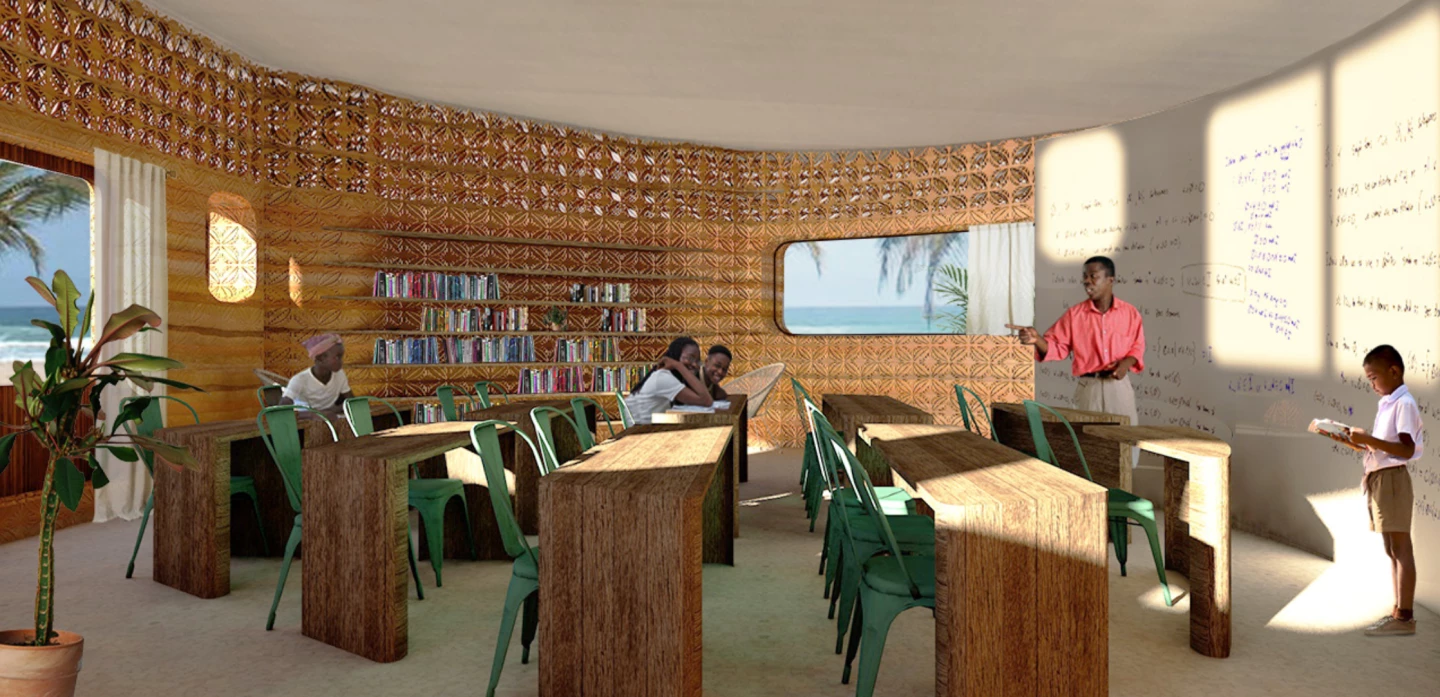Over the past few years, 3D-printed architecture technology has matured from a hobbyist novelty to being used to create everything from offices to affordable housing – it now seems more a case of when, not if, it will become a widespread construction technique. The latest stride in this area concerns a plan to create the world's first 3D-printed school in Madagascar.
The 3D-printed school is the product of a collaboration between nonprofit Thinking Huts and architecture firm Studio Mortazavi, with Hyperion Robotics lending expertise. It's slated to begin construction sometime this year and Thinking Huts hopes to raise US$350,000 to help that happen.
Assuming all goes well, the project will comprise a single-story building measuring roughly 1,700 sq ft (157 sq m), with space inside for around 30 students. Solar panels will be installed for power and a rainwater collection system will be added too, while the interiors will be naturally ventilated. The building's overall form is conceived as a "pod," with the idea being that additional pods can be added with relative ease if required (the image at the top shows four such pods connected together, for example).
The building will be constructed using the same method we've become familiar with from other 3D-printed architecture projects: it will involve extruding a locally sourced cement mixture, layer by layer, until the basic structure is complete. Human builders will then add a corrugated metal roof, as well as other finishing touches like doors and windows, plus install the furniture inside.

The team says that the printing process is expected to take around 22 days, which is quicker than traditional building techniques in the area. It also says it'll also offer a structurally strong building with a space in between the inner and outer walls for insulation.
"The wall produced during the 3D printing process will be 27 times stronger than a sun dried clay brick, 3.5 times stronger than a kiln fired clay brick and two times as strong as standard concrete," says the press release. "This strength provides much more resistance to decay and structural failure of the wall than the use of clay bricks (kiln fired or sun dried) or even than traditional concrete. This is key to keeping students safe and maximizing the useful life of the building."
The school is a pilot project and, looking to the future, Thinking Huts hopes to expand the idea to provide more schools elsewhere in Madagascar, and even throughout in the world.
Sources: Thinking Huts, Studio Mortazavi








